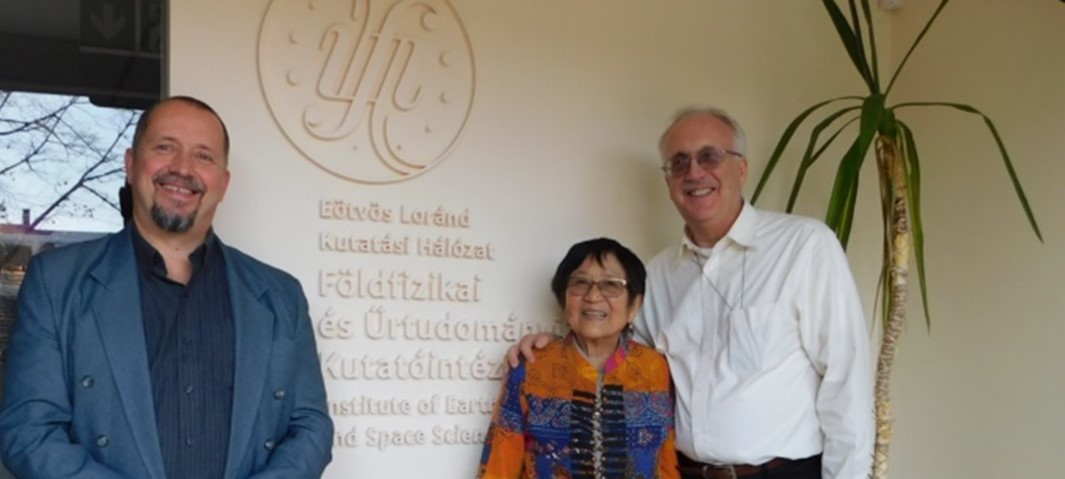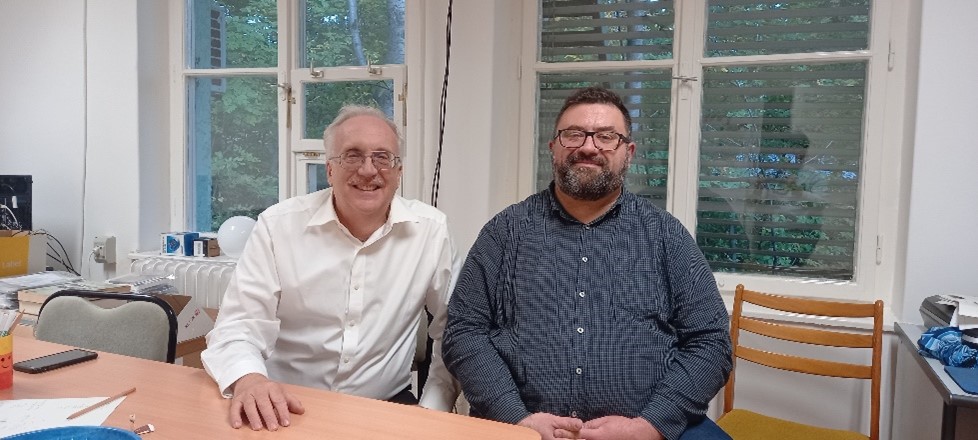Dr David Gary Sibeck, senior researcher at NASA's Goddard Space Flight Center (GSFC) came to Hungary in October 2022 at the invitation of Dr Árpád Kis, the deputy director responsible for the development of space research and senior research fellow at the ELKH Institute of Earth Physics and Space Science (FI). Dr Sibeck also visited FI and the ELKH Wigner Research Centre for Physics (Wigner RCP), where he presented his latest research. Both institutions have already conducted joint research with NASA and they also reviewed the possibilities of further cooperation during his current visit.
Dr Sibeck has published 387 peer-reviewed scientific articles to date and statistics show that his findings have been cited more than 17,300 times around the world. He has led several NASA space missions, including the Van Allen Probe and TRACERS missions. He is currently a lead researcher on the THEMIS/ARTEMIS satellite mission. His areas of research range from the plasma structures of the solar wind to the transient phenomenon of the ionosphere. The focus of his current research is on the physical processes taking place in the environment of the interface on the sunward side of the Earth's magnetosphere, with a special focus on phenomena related to terrestial shock waves, known as bow shocks.
Research related to bow shocks has a strong tradition at FI, which is why Dr David Sibeck's visit was particularly useful and timely from a professional point of view. The guest researcher's presentation on Dayside Solar Wind-Magnetosphere Interactions was also followed online by many people from abroad. What was said at the presentation clearly confirmed that in order to effectively predict potentially dangerous space weather effects on critical infrastructure, it is essential to have precise knowledge of the processes taking place when a terrestial bow shock occurs. This means that shockwave-related research is expected to be of particular significance in the future.

From left to right: Dr Árpád Kis, Dr Ray-Qing Lin Sibeck and Dr David Sibeck in front of the FI entrance in Sopron
Over a few months in 2016 and 2017 Dr Sibeck hosted Dr Gábor Facskó, senior scientific associate of the Wigner RCP Department of Space Physics and Space Technology, at NASA GSFC. Both researchers are experts in dayside magnetospheric transient phenomena occurring before bow shocks of Earth and other planets. During his recent visit the distinguished guest was introduced to the research findings of students and senior researchers, and he made suggestions for further work. The researcher's presentation Remotely Sensing the Magnetosphere's Boundaries held on October 20, 2022 could be followed also online via Zoom. Dr Sibeck offered further cooperation to the researchers of FI and the Department of Space Physics and Space Technology of Wigner RCP in the field of data processing of the THEMIS probes and the study of transient phenomena of the dayside magnetosphere, as well as with the European Space Agency (ESA) and the Chinese Academy of Sciences (CAS) in the development of the Solar-wind Magnetosphere Ionosphere Link Explorer (SMILE) mission, which aims to detect the Earth's magnetosphere in the soft X-ray range.

Dr Sibeck and Dr Gábor Facskó in the meeting room of the Wigner RPC Space Physics and Space Technology Department on October 20, 2022 (Photo: Munkhjargal Lkhagvadorj).
Dr Sibeck previously participated in the work of a group from the International Space Science Institute (ISSI) together with Dr Árpád Kis and Dr Gábor Facskó. We reported on the results presented in a study with their co-authorship in an earlier news article.
According to the plans Dr Sibeck will visit FI and Wigner RPC for one week each year. In addition, from 2023, Dr Gábor Facskó and one of his students are invited to make short visits of a few months to the NASA GSFC at the expense of the inviting party.